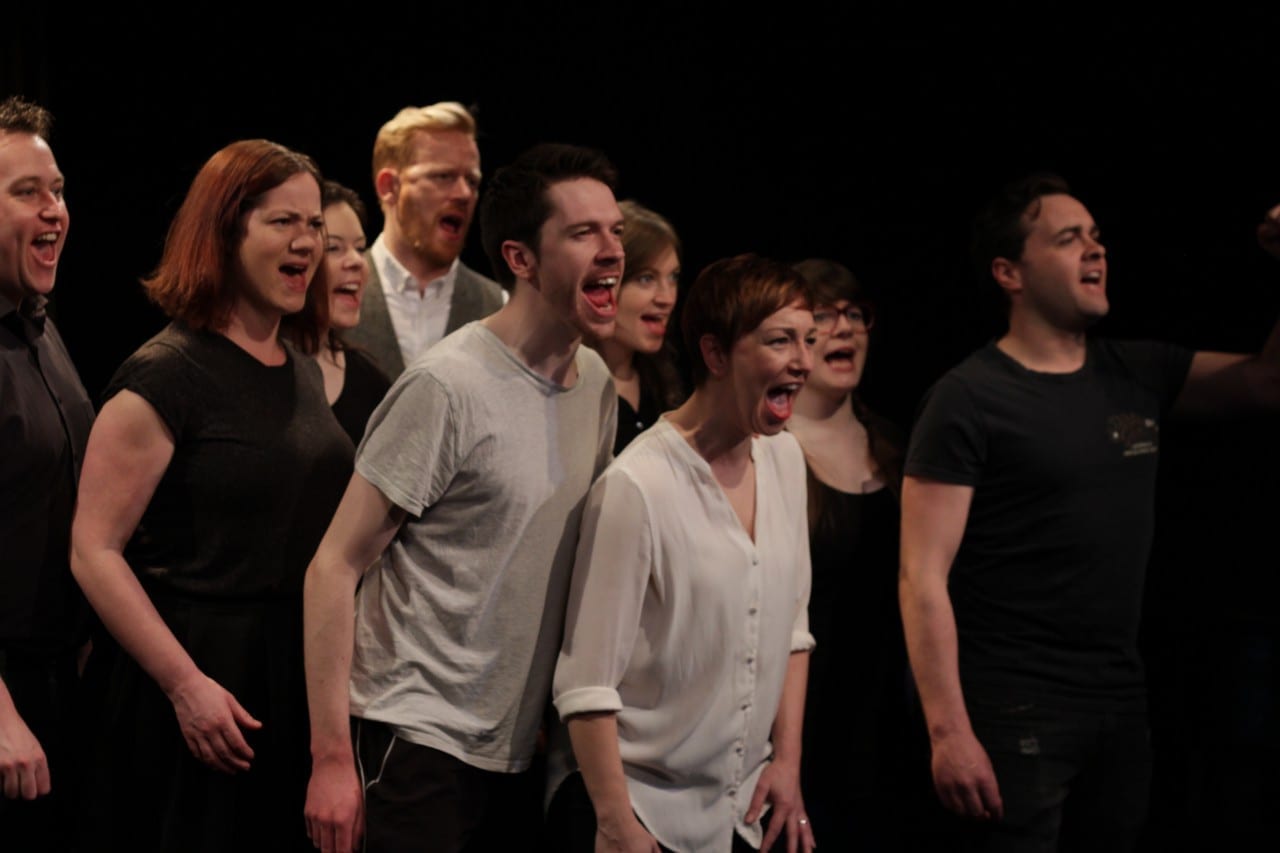This year sees the centenary of the Easter Rising in Ireland. Though the insurrection was defeated and some of its leaders were executed, the Rising is widely held to have begun the process which ended with the establishment of the Irish Free State in 1922. This verse drama by D’Arcy and Arden is in six parts and traces the story of James Connolly from his boyhood amidst the Irish community in Edinburgh to his execution by firing squad days after the Rising was put down by British troops. On the opening night parts 1 and 2 of the play were read; the other parts of the play will be read at performances later in April.
This is a dramatised reading, not a full performance. The actors sit in two rows of chairs down either side of the stage and there is a fiddle player behind them providing music for some of the ballads that they sing. The narrative sections of the drama are in verse but nearly all the dialogue is in plain and powerful speech. All the actors hold copies of the text but most of them refer to the text infrequently and the action rarely falters as is often the case in readings of this sort. The authors always saw the piece as lying outside the traditions of conventional drama and naturalistic productions were never part of their vision of the work. Both were very involved on the political left and their polemical stance shines through every scene – whether it is about the way young workers are exploited in Scottish workplaces or the way English soldiers despise their Irish counterparts.
There are some fine performances among the ten actors involved in the opening night performance. Aiden O’Neill is superb as Connolly himself, managing with style the transition from abused apprentice in Edinburgh to young soldier in Dublin to fledgling trade union leader in Dundee. His singing was spot on too. Lucia McAnespie is excellent in a number of roles and especially in part 2 in the role of Connolly’s wife, Lillie. And despite the fact that all the actors have the text in their hands the staging is choreographed with real flair and the “crowd scenes” have plenty of vigour and punch.
Do not go to any of the remaining performances of the parts of this drama if you are expecting to see a slick version of the “James Connolly Story”. But if you want to understand more about the struggle for Irish freedom and about the people who were willing to give their lives for that goal – and if you want to enjoy the excitement created by young actors throwing themselves into a performance based around sharp dialogue and well-spoken verse – try to catch up with one of the performances later in April.

